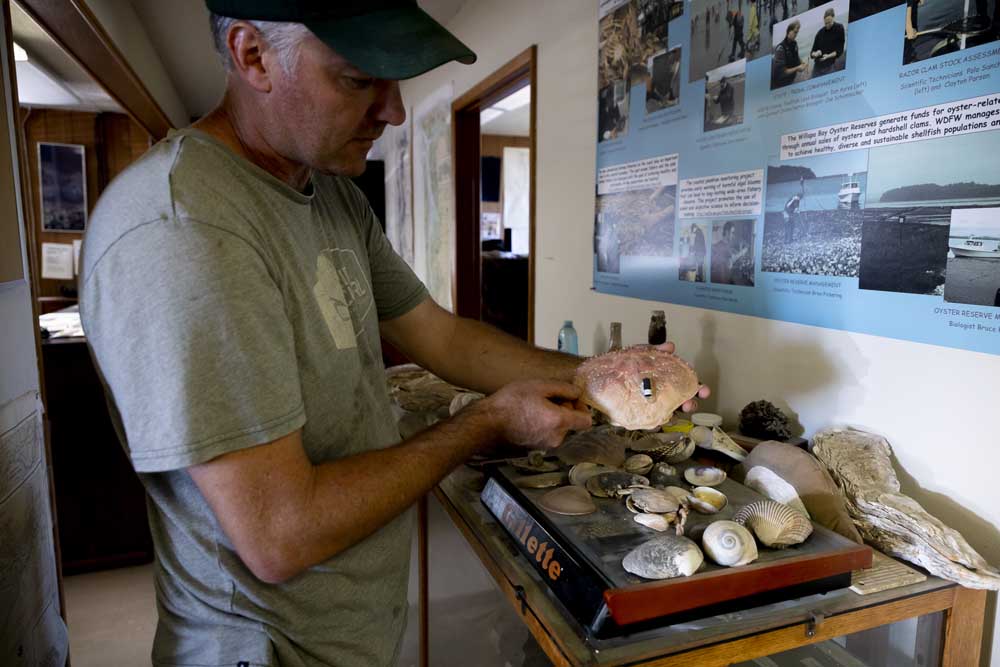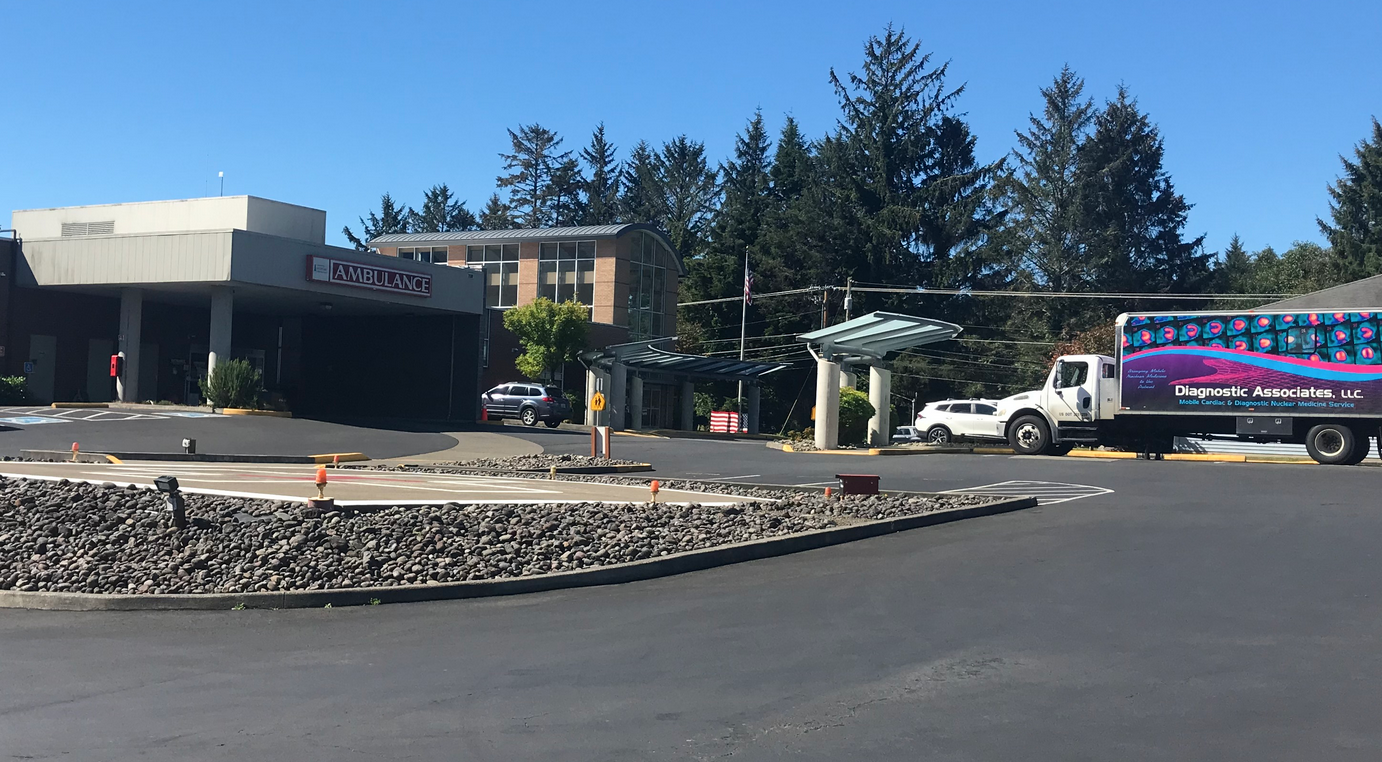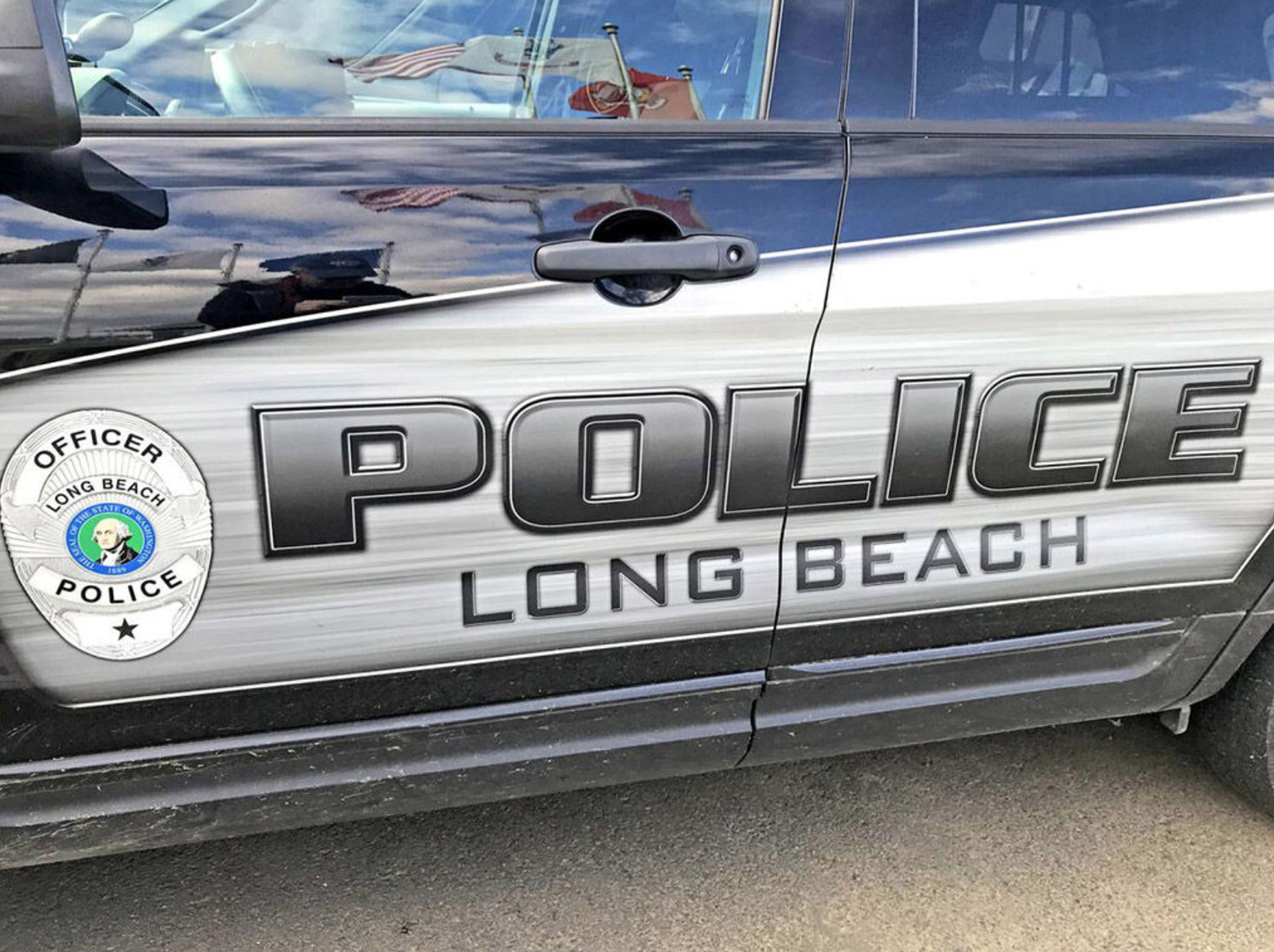Willapa Bay green crab war enters new phase
Published 11:50 am Monday, October 24, 2022

- Tracking in an intertidal zone is a new frontier for the technology, and a first to be used on green crabs. Similar tracking technology was used in the ocean and Columbia River estuary on Dungeness crabs during a project in 2016, but it was exclusively underwater.
OCEAN PARK — They can crawl, but they can’t hide.
Trending
The war on an invasive crab wreaking havoc on Willapa Bay has entered a new phase, with scientists implementing an innovative intertidal tracking technology to help pinpoint the movements and behavior of European green crab above and below the tide line.
The goal of the project is to help maximize trapping efforts by better understanding where to find the highest concentration of the crab, which have devastated clam populations on the U.S. Eastern Seaboard and elsewhere around the world.
Boots on the mudflatsOn a clear October morning, a group of biologists and technicians from the Washington Department of Fish and Wildlife and NOAA Fisheries assembled at a field office south of the Port of Peninsula in Ocean Park.
Trending
Throughout the morning, the team worked to collect several crab traps baited days earlier on the tide flats, each collecting dozens of male and female green crabs of various sizes. Nearly every trap contained the palm-sized crabs, ranging from a few to more than a dozen in traps deeper in the tidal zone.
Once collected, the crab were brought back to the field office and sorted by size and sex, before 41 were set aside for their next mission.
‘The problem with the invasion is… how do you maximize your chances of getting a whole lot of crabs at once to remove. If they go down the tidal channels, for instance, then you could target that area and maximize your ability to remove them.’
Dr. Curtis Roegner
NOAA Fisheries research biologist
Using a five-minute epoxy, they diligently worked to attach tiny, black receivers — about the size of a piece of elbow macaroni — to the shells of 41 green crab, which would be subsequently released back into the bay.
The crabs’ movements will be monitored over the next several months, giving researchers the first glimpse into the daily migrations and habits of the crab that has become a nuisance throughout the bay — particularly in recent years as populations have exploded.
“We’re going to learn how the crab interact with the habitat on this parcel,” said WDFW Coastal Shellfish biologist Zach Forster. “Just south of us is Paul’s Slough, and that’s been one of the hot spots.”
The invasive crabs were first documented in Willapa Bay in the 1990s. After an initial monitoring effort was axed by the state during a budget crisis, the population has exploded in recent years aided by environmental changes, causing problems for shellfish farmers and impacting native habitat.
“We thought the problem was about ready to go away. In 2012-2013, there were very few being encountered, and what was were really large and old crab approaching the end of their life cycle. We thought they were going to naturally phase out, but those warm-water years in 2014 to 2016 allowed for a huge population in bay — bigger than what we saw in the 90s,” Forster said.
Acoustic array
Roughly a dozen acoustic receivers, part of an array eventually spanning Willapa Bay, will read and track the tags on the crabs while “talking” to other receivers in bay.
“As the tide comes up and the crabs start to move, we’ll be able to see where they go every day here,” Forster said. “If the crab spread off this smaller array, chances are we’ll ping them in other spots in the bay. The technology is awesome.”
Tracking in an intertidal zone is a new frontier for the technology, and a first when it comes to green crab. Similar tracking technology was used in the ocean and Columbia River estuary on Dungeness crabs during a project in 2016, but it was exclusively underwater.
“It’s the first in intertidal form, so it makes it a little trickier,” said NOAA Fisheries research biologist Dr. Curtis Roegner. “Green crabs will explore both environments, so we have to have the acoustic array set up underwater and intertidal, so when the tide comes in we can link them and see where the population of crabs are moving around in almost real time.”
Each tagged crab has a coded tag and number that will “ping” to nearby receivers. The pings, when analyzed, will paint a better picture of the crabs’ actions over a daily, weekly and monthly period.
“Any tag in the area can be heard by multiple receivers and get an exact position of where that crab is. That’s what we’re trying to do, tag these crab, release them, and then track their movements in the tidal and intertidal zone. Do they, for instance, stay in the intertidal zone when the tide goes out? Or do they follow the water back down and reside mostly offshore? And how do they do it? Do they go down the tidal channels to move out or just crawl off the edges of the bank? We want to find out what they do,” Roegner said.
“The problem with the invasion is … how do you maximize your chances of getting a whole lot of crabs at once to remove. If they go down the tidal channels, for instance, then you could target that area and maximize your ability to remove them.”
The scientists anticipate seeing the first results this winter, when they plan to return to the area, remove the receivers and analyze the data.
“We want to give it some time, that transition from fall to winter behavior patterns,” Roegner said. “We’ll revisit this site around February, when females will probably begin to getting gravid around that time. We’re in particular looking to see where some of the bigger females will be and do compared to the males. I think the whole thing is exciting to see, just what are the secret lives of green crabs and what do they do?”
Small but destructiveThe European green crab (Carcinus maenas) is a small shore crab whose native distribution is in the northeast Atlantic Ocean and Baltic Sea, according to NOAA Fisheries, ranging along coasts from northern Africa to Norway and Iceland. The crab is an effective predator, adept at opening bivalve shells, and has been blamed for harming the soft shell clam industry on the U.S. East Coast and, more recently, the West Coast — including areas in Willapa Bay and Grays Harbor.
Several varieties of shellfish — including clams, mussels and oysters — have all been susceptible to the diminutive crab, which often leave their signature on the empty shells.
While a primary focus of the pilot tracking project is to study the green crabs’ behavior and movements, a larger study that includes a ‘feeding study’ to better understand their diet and food preferences is also being proposed.
“Is it oysters, clams, mussels? We know they also eat brown algae, but is there a preference?” said Forster.
Biologists have begun conducting experiments in the Willapa laboratory to determine what the crabs prefer to predate upon and how they do it, including oysters, manila clams and mussels. Sizeable crab populations have been reported on clam and oyster beds throughout Willapa Bay.
“There’s a lot of crabs on clam and oyster beds just to the north of us,” Forster said.
“On the East Coast, they found out there’s a telltale way that they open the oysters; they clip them open by the bump on the hinge. With the manila clams, they were basically able to crush the shell whole. We found out when we dropped the mussels in the cage that they really like mussels, too. The crabs that did this were no bigger than the ones we’re tagging. The idea is that if a grower goes out on their bed and sees the signs, then they know it’s probably not an oyster drill (a type of predatory sea snail) but probably a green crab by the way they crush them.”
Dungeness study
Another 29 trackers were attached to a mix of Dungeness and red rock crabs in addition to the green crabs.
“It’s funded as a pilot study though the [state] Recreation and Conservation Office. The idea was to see how the pilot project went, and then make it part of a larger effort in some other areas in the bay — possibly Grays Harbor, if there’s funding,” Forster said.
The tags are a smaller version of those used to monitor Dungeness crab in the ocean and Columbia River estuary during a study in 2016 that involved the long- and short-term impact of dredging sediment on crabs.
“We found that it didn’t have an impact. They were active months later after being dumped on. They looked like they were okay,” Roegner said.
Among the most revealing aspects from the 2016 Dungeness tracking study was the distance and movement of the crab.
“Dungeness don’t sit around much. They really move and they can swim fast, like 25 centimeters [about 10 inches] a second,” Roegner said. “In the course of a tide, they can be kilometers away from where they were tagged, and they did that. They almost always went in a straight line, very linear, from south to north. I didn’t expect that. I thought they would hunker down more. One hypothesis is there’s not a lot of of food out there and they’re searching for it.”









